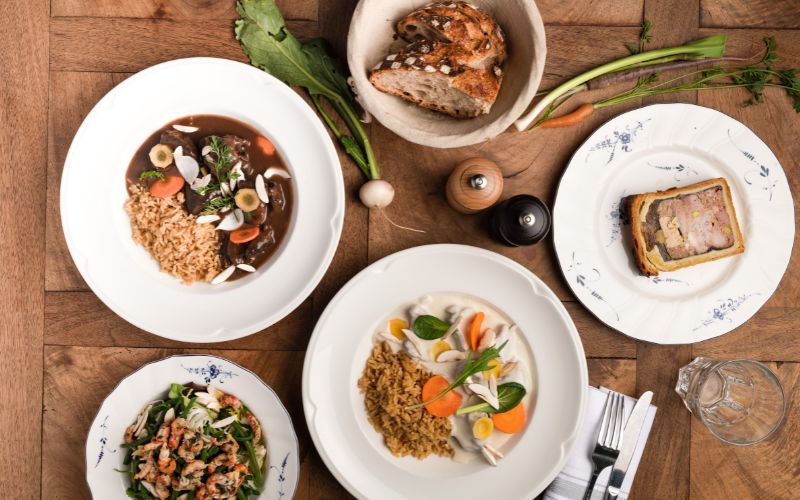Food is much more than mere sustenance; it’s a journey, a story, and an adventure. Our culinary odyssey takes us beyond the mere act of eating; it is a celebration of cultures, a symphony of flavors, and an exploration of the human experience. Join us on this gastronomic journey as we traverse the world of food and beyond.
The Universal Language
Food transcends borders and languages. It serves as a common ground where people from diverse backgrounds come together to share their stories and traditions. From the spicy street food of Thailand to the comforting bowls of pasta in Italy, food is a universal language that connects us all.
Cultural Chronicles
Every dish has a story to tell, and each recipe is a chapter in the cultural chronicles of a region. Take, for instance, the rich and aromatic biryani of India. It’s not just a dish; it’s a reflection of India’s history, blending Persian, Mughal, and indigenous flavors into a single, delectable pot.
Or consider the sushi of Japan, an art form as much as a meal. It encapsulates the precision and discipline of Japanese culture, where each piece is meticulously crafted to perfection.
Exploring these culinary histories allows us to delve deeper into the essence of a place, connecting us with its people and their way of life.

The Adventure of Taste
Embarking on a gastronomic adventure is not for the faint of heart. It’s a journey that tantalizes the taste buds and challenges preconceived notions of what food should be.
For those with an adventurous spirit, the world offers a smorgasbord of exotic delicacies. From the pungent durian fruit in Southeast Asia to the crispy fried crickets of Mexico, there’s no shortage of daring dishes to try. These culinary risks often lead to some of the most memorable and unexpected flavor encounters.
Mindful Eating
In our fast-paced world, we often rush through meals, missing the opportunity to savor each bite fully. Yet, there’s a growing movement towards mindful eating, encouraging us to slow down and appreciate every aspect of our food.
From farm-to-table dining experiences that reconnect us with the source of our sustenance to the art of wine and food pairing that engages all our senses, mindful eating enriches our gastronomic journey. It reminds us that food is not just about filling our stomachs but also nourishing our souls.
The Artistry of Presentation
Food is not only about taste but also about aesthetics. The artistry of food presentation elevates a meal from a simple dish to a visual masterpiece.
In the world of haute cuisine, chefs are like artists, using plates as canvases and ingredients as their palette. Each element on the plate is carefully chosen and arranged to create a harmonious composition of colors, textures, and flavors. Dining becomes an experience for all the senses.

Sustainability and Food Ethics
As we journey through the world of food, we must also consider our impact on the planet. Sustainable practices, such as locally sourcing ingredients and reducing food waste, are becoming increasingly important.
Our gastronomic odyssey should not only be a feast for the senses but also a responsible one. We have a duty to preserve the diverse flavors of the world for future generations.
Conclusion
Food is a powerful force that connects us to our roots, to other cultures, and to the very essence of life itself. It’s a journey that takes us beyond the plate, allowing us to explore the world and our place in it. So, let’s savor each bite, celebrate the stories behind our meals, and embark on our own gastronomic odyssey, for food truly takes us beyond the ordinary and into the extraordinary.






